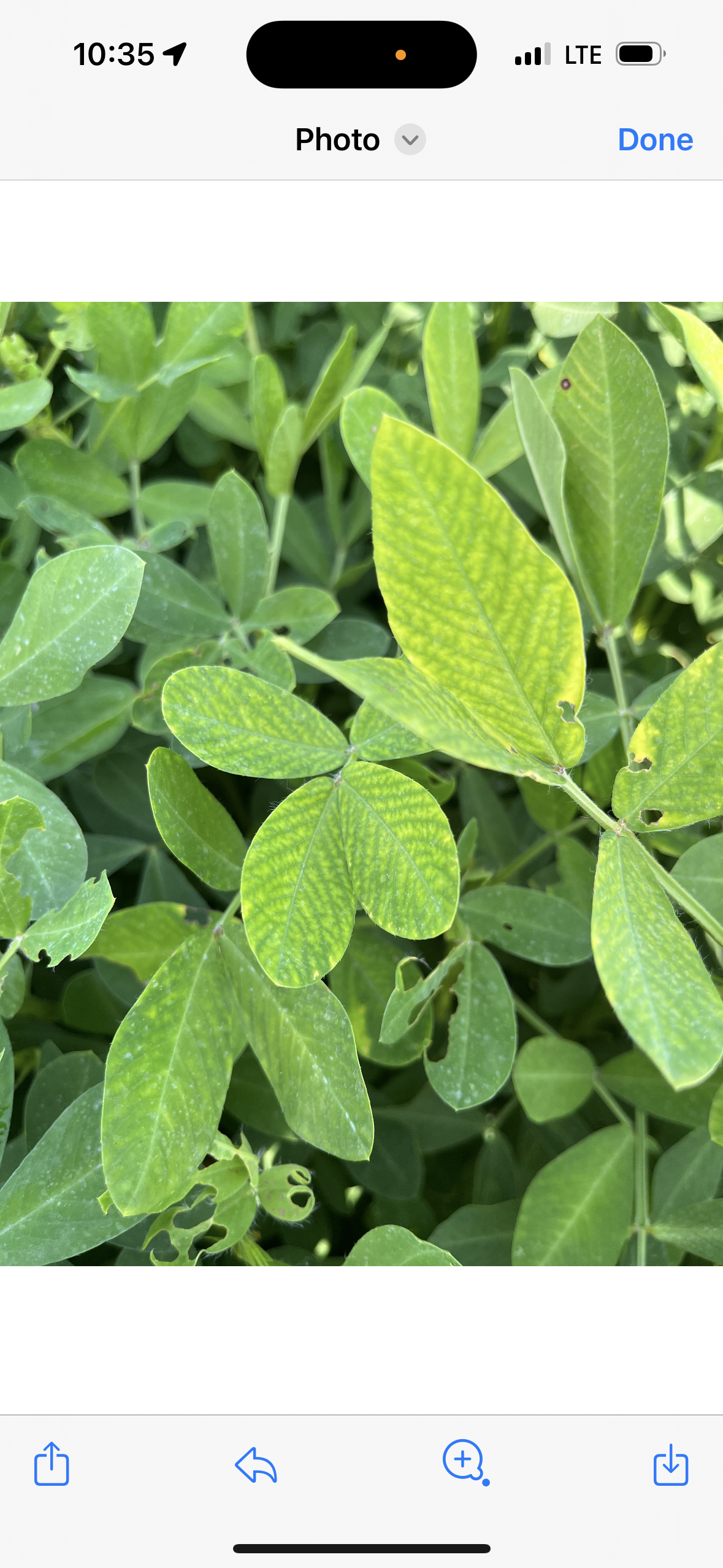Leaf Issue Peanut Notes No. 182
go.ncsu.edu/readext?1018195
en Español / em Português
El inglés es el idioma de control de esta página. En la medida en que haya algún conflicto entre la traducción al inglés y la traducción, el inglés prevalece.
Al hacer clic en el enlace de traducción se activa un servicio de traducción gratuito para convertir la página al español. Al igual que con cualquier traducción por Internet, la conversión no es sensible al contexto y puede que no traduzca el texto en su significado original. NC State Extension no garantiza la exactitud del texto traducido. Por favor, tenga en cuenta que algunas aplicaciones y/o servicios pueden no funcionar como se espera cuando se traducen.
Português
Inglês é o idioma de controle desta página. Na medida que haja algum conflito entre o texto original em Inglês e a tradução, o Inglês prevalece.
Ao clicar no link de tradução, um serviço gratuito de tradução será ativado para converter a página para o Português. Como em qualquer tradução pela internet, a conversão não é sensivel ao contexto e pode não ocorrer a tradução para o significado orginal. O serviço de Extensão da Carolina do Norte (NC State Extension) não garante a exatidão do texto traduzido. Por favor, observe que algumas funções ou serviços podem não funcionar como esperado após a tradução.
English
English is the controlling language of this page. To the extent there is any conflict between the English text and the translation, English controls.
Clicking on the translation link activates a free translation service to convert the page to Spanish. As with any Internet translation, the conversion is not context-sensitive and may not translate the text to its original meaning. NC State Extension does not guarantee the accuracy of the translated text. Please note that some applications and/or services may not function as expected when translated.
Collapse ▲Question:
What caused this?
Jordan:
Looks like manganese deficiency. I had a post a few weeks ago on it with photos.
Could also be early expression of boron toxicity or rapid growth after rains.
Follow up:
So, it’s in a low spot in the field. Couple spots. Majority of the field looks green and fine. What would you recommend based on this peanut tissue sample? (Note that the tissue sample had low levels of nitrogen, sulfur, and phosphorus. There was also elevated zinc. I did not include the actual report because it had the farmer’s name on it.)
Jordan:
I think when we dry up some, the roots will get back going and so will the bacteria that fixes N. The report suggested zinc might be an issue. Might want to check soil levels. If it is zinc, peanuts will not get much better even as soil dries. If it is not zinc (any chance there was an issue before we got wet), peanuts will get back going. No magic bullet. Peanuts in many fields need drier soil and sunlight and not more fertilizer.



